Pacifica Hybrid lifts minivan to new heights
Filed under: Equinox, Autos

Redesigned Chrysler Pacifica minivan now includes a Hybrid optional model that can approach 100 mpg.
By John Gilbert
SANTA MONICA, CA.
Car-buyers left minivanS for SUVs a decade ago, with about the same disdain they had previously abandoned station wagons for minivans. Enough folks stayed with minivans, however, simply by knowing they were the most efficient way to convey seven occupants for less expense.
And the latest trend seems to indicate a fair number of buyers are now migrating back from three-row SUVs to minivans, which themselves have risen to a surprising level of luxury and efficiency. With that in mind, Chrysler introduced its new Pacifica last summer — a minivan so thoroughly renovated that Fiat-Chrysler decided the old names Caravan and Town & Country simply wouldn’t do. The intention was to reaffirm the company’s superiority in a segment it already dominates with a 37-percent hold.
New looks, new refinement, new features, and the latest technology from top to bottom were impressive, but FCA was holding back the potential knockout blow. It has now been delivered — the surprising Pacifica Hybrid.
We seem to know it’s inevitable we’ll all be driving electric-powered vehicles or hybrids in the not-too-distant future. And maybe sooner than later. Electric cars need to be plugged in to function, while the best hybrids can benefit by being plugged in, but also can run off regenerated power from an internal combustion engine and simple braking.
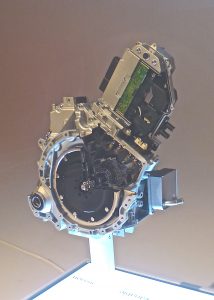
Both of the two electric motors designed into Pacifica Hybrid’s elite variable transmission can drive the front wheels alone or jointly with the highly modified 3.6-liter V6 for 30 miles of pure electric or 80 mpg combined.
Keeping all of the assets of the Pacifica on board, the company renovated its impressive 3.6-liter Pentastar V6 with new camshafts, new pistons, new valves and Atkinson-cycle injection geometry, then hooked it up to a pair of electric motors, operated off a 16 kilowatt hour battery pack from LG Life, a cutting-edge South Korean technology outfit that has recreated itself in various other plants around the world, including the Detroit area.
It stretched the imagination to realize that you can be piloting one of these moving living rooms in a swift and agile manner, with seven occupants on board, and getting 30 miles of dedicated electric silent running, or the equivalent of 80 miles per gallon during hard usage, or a total range of 530 miles using both gas and electric before you need to refuel with gasoline.
Matt McAlear, Chrysler brand marketing manager, was discussing how his life has changed since working with the Pacifica Hybrid in the last year. He said he drives to work, using part of the 30 miles of electric-only range, then he plugs it in during the day, and then he drives home, again on all electric.
“I was driving past a gas station the other day,” McAlear said, “and I realized that I don’t go to gas stations any more.” Read more
VW aims Atlas at heavy-lifting SUV duties
Filed under: Equinox, Autos
By John Gilbert
SANTA MONICA, Calif. — As Volkswagen stirs and juggles executives in the wake of its incredible diesel emission-cheating scandal, the company continues to make bold and aggressive moves to keep, and even attract new, customers. The latest moves for the 2017 model year have been toward the can’t-miss sport-utility vehicle segment.
First, Volkswagen restructured the popular SportWagen, which recently was switched from Jetta to Golf livery, then VW specifically reinforced it and altered its objective for all-terrain duty as its new Alltrack, a beefier sibling to the SportWagen. Having tested the Alltrack in the Pacific Northwest, I can attest to how impressive it is with its 4Motion system carrying its new and stiffer frame on some serious offroad trails.
The Atlas is the largest SUV Volkswagen has ever built in overall dimensions, and it answers the demands of VW dealers and customers who have clamored for a VW that will haul a larger family. It is, officially, a midsize SUV, which differentiates it significantly from the popular compact crossover trend. It is 198.3 inches long, 77.9 inches wide, and 69.6 inches tall.
Right on the heels of the Alltrack, Volkswagen invited selected automotive journalists to Santa Monica, where we went out to a nearby enclosed facility on the beach adjacent to the legendary Santa Monica Pier for the unveiling of the Atlas — another new and still larger Volkswagen SUV.
“It is designed for American buyers and will be built at our American factory in Chattanooga, Tennessee,” said Hinrich Woebcken, CEO of VW Group of America. “We are adding $900 million to our factory, and that will help with our impressive electrification program. We intend to have 30 electirified vehicles by 2025.” Read more
Compact Sportage makes large impression
Filed under: Equinox, Weekly test drives, Autos
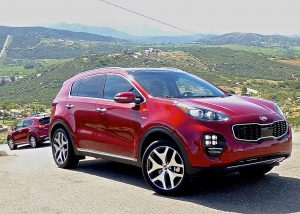
The 2017 Kia Sportage showed its turbocharged flair in the Southern California mountains, but is equally at home on suburban roadways.
By John Gilbert
It’s difficult enough for a car-maker to try to compete in the most intense segment in the industry, but for Kia it’s even more of a challenge, because it had to additionally compete with Hyundai, its South Korean partner and benefactor, before coming out with the 2017 Kia Sportage.
Compact crossover SUVs are currently the rage in automotives, and finally we’ve got a trend that makes sense. If larger or midsize SUVs have more space than cars and can haul everything at once, they also cost more money, require larger engines and therefore suffer when it comes to fuel economy, and they are more difficult to drive in congested traffic, let alone park.
The trend a decade ago to downsize from large SUVs to midsize was, therefore, logical and made economic sense. Whne the trend continued, down from midsize to compact crossover SUVs (CUVs), they proved enormously popular. If the room is adequate, the compacts could boast of much better sticker prices, and sportier handling with smaller, peppier and more fuel-efficient engines.
A perfect example is the 2017 Kia Sportage, the compact little brother to the solidly entrenched midsize Kia Sorento. It is a parallel vehicle to Hyundai’s Tucson, but there are significant differences, leaving both with distinct advantages.
Hyundai took over Kia almost a decade ago, and the two have been raised as separate but equal companies, both benefitting by the other’s successes. Hyundai was on the verge of an engine-making breakthrough right about then, and Kia came along with some equally brilliant design ideas. That helped make it more of a merger than a takeover, and both kept turning out exceptional vehicles from the smallest compact cars up through luxury vehicles, and with SUVs that filled all the required gaps. Read more
2017 Alltrack could renew trust in VW
Filed under: Equinox, Weekly test drives, Autos
By John Gilbert
If it looks like a Sportswagen, has the same utility as a Sportswagen, and goes like a Sportswagen, it must BE a Sportswagen, right?
Not necessarily. It might also be an Alltrack. Volkswagen is expanding the array of solid and substantial vehicles under the Golf brand name by adding a new and much more capable wagon-like vehicle named the Alltrack for 2017.
While it certainly resembles the venerable and popular wagon that used to be a Jetta but recently changed over to Golf livery, the Alltrack comes on the same MQB platform, bolstered with undercarriage armor plating, and with standard 4Motion all-wheel drive, at a bargain price. The price of the basic S model starts at $25,850 for the 6-speed stick shift, rising to $26,950 for the upgraded SE model, and $32,890 for a fully loaded SEL.
All Alltrack models come equipped with VW’s slick, high-tech 1.8-liter direct-injected and turbocharged 4-cylinder gasoline-sipping engine. No mention of the lack of availability of any turobdiesels, which, under the circumstances, is not surprising.
The surprise, to me, is that VW is going to continue offering the Golf Sportwagen, which is exactly the same length and, at a glance, has the same look, but lacks the impressive off-road capabilities. In my naivete, it seemed to make sense to plug in a couple versions of the Sportwagen as the entry-level Alltrack, but that won’t be happening. The Sportwagen comes with either base front-wheel drive or the upgraded 4Motion model, the Sportwagen S Sport.
Five waves of automotive journalists converged on Seattle for the introduction of the Alltrack, with the added lure of VW’s annual all-model presentation for 2017. We spent one day cruising across the harbor from Seattle on the Bainbridge Island Ferry, and drove most of the day around the twisty rural roads of Bainbridge Island as well as negotiating a rugged off-road course. Back to the ferry and Seattle, and the next day we drove up to Snoqualmie, where we found the rest of the VW fleet parked at the Mount Si Golf Club for our use. Read more
Take a roundabout visit to Spain
Filed under: Equinox, Features, Autos
By John Gilbert
ESTEPONA, Spain
Volvo took a roundabout route to developing its impressive new S90 sedan — first building the XC90 SUV, then making the S90 virtually a sedan-size derivative — and the introduction test drive of the carliterally took us on a roundabout route.
The area we visited, along the Spanish Riviera between Malaga and the resort city of Estepona, would seem to indicate that Spain might lead the world in “roundabouts,” those intersection replacements that turn important roadway interchanges into forced-slowdown circles with various inlets and outlets. In congestion, of course, entering a rotary can be dicey and exiting can be more like an escape.
In southern Spain, it seemed as though nearly every exit from a freeway sent you into a roundabout, which in turn distributed traffic in any and all directions. We weren’t aware of all that when we first arrived in Malaga, then rode a coach bus to our luxurious Kempinski Hotel Bahia in Estepona.
Our wave of auto journalists gathered to leave our for dinner at El Pescadoran, where we learned another Spanish tradition. You sit family style, and waiters bring out large platters or bowls of delectable food. Unwilling to leave any, we ate virtually every morsel, then the waiters took the platters away and replaced them with more platters of different delectable items.
The lengthy menu we had seen, briefly, was impressive, but the reason nobody asked us for our selections was they intended to bring us ALL of the selections. Next morning, we had some discussions, and then we were off on Leg 1 of our 4-Leg test drive. Three of the legs would be in S90 sedans, and the fourth in the V90, a slick and sleek station wagon that seems much longer than the sedan, but actually is 3 inches shorter.
My driving partner was Parks McCant, a tall fellow I’d met at the Malaga, Spain, airport, as we joined forces hoping to form a posse that might locate a person wielding a Volvo sign to direct us to a bus that might convey us to our hotel. We struck a quick and easy relationship, and, because he’s 6-foot-6, I knew he would provide real-world evidence of adequate head and legroom in our test cars.
I got behind the wheel first, and after agreeing on the luxurious comfort enveloping us, and the impressive ergonomics of the controls and other features, we were off.
Our start was so intriguing we decided to repeat it three or four times — involuntarily, of course. Instead of the usual direction book, Volvo installed all the turns for the route into the navigation system, which is a great idea. A pleasant, soothing female voice suggested when to get into the right lane, prepare to turn, and then turn.
We only went a mile or so and were instructed to exit. At the top of the exit ramp we found our first roundabout. The Nav Lady told us to take the third exit from the roundabout, which we did. We should have taken the second, but we didn’t know that, so we trusted the instructions.
The highly efficient Nav Lady, with proper Scandinavian courtesy, didn’t tell us we had fouled up, but merely directed us back on course. So we thought we were merrily on our way, following a sequence of directions to cross a bridge to another roundabout, followed by directions to another roundabout, then a third roundabout. That got us back near our starting position, and because it was all pretty unfamiliar, we sailed off again. We followed the same instructions the second time, and it wasn’t until partway through the third lap around the same sequence of roundabouts that we realized we were repeating our mistake.
Somehow, the wrong instruction trapped in a sequel-with-roundabouts of the Bill Murray movie “Groundhog Day,” where the star is destined to repeat everything, day after day, trapped in some cosmic vortex. Read more


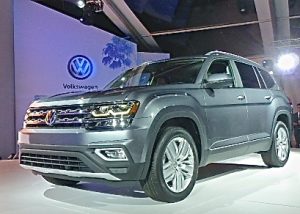
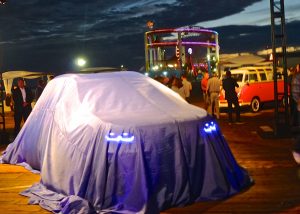
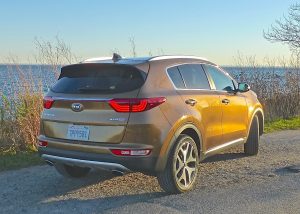
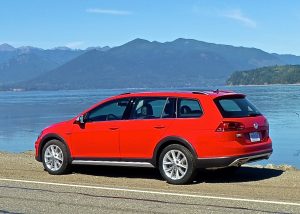

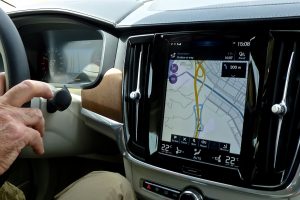


 John Gilbert is a lifetime Minnesotan and career journalist, specializing in cars and sports during and since spending 30 years at the Minneapolis Tribune, now the Star Tribune. More recently, he has continued translating the high-tech world of autos and sharing his passionate insights as a freelance writer/photographer/broadcaster. A member of the prestigious North American Car and Truck of the Year jury since 1993. John can be heard Monday-Friday from 9-11am on 610 KDAL(www.kdal610.com) on the "John Gilbert Show," and writes a column in the Duluth Reader.
John Gilbert is a lifetime Minnesotan and career journalist, specializing in cars and sports during and since spending 30 years at the Minneapolis Tribune, now the Star Tribune. More recently, he has continued translating the high-tech world of autos and sharing his passionate insights as a freelance writer/photographer/broadcaster. A member of the prestigious North American Car and Truck of the Year jury since 1993. John can be heard Monday-Friday from 9-11am on 610 KDAL(www.kdal610.com) on the "John Gilbert Show," and writes a column in the Duluth Reader.